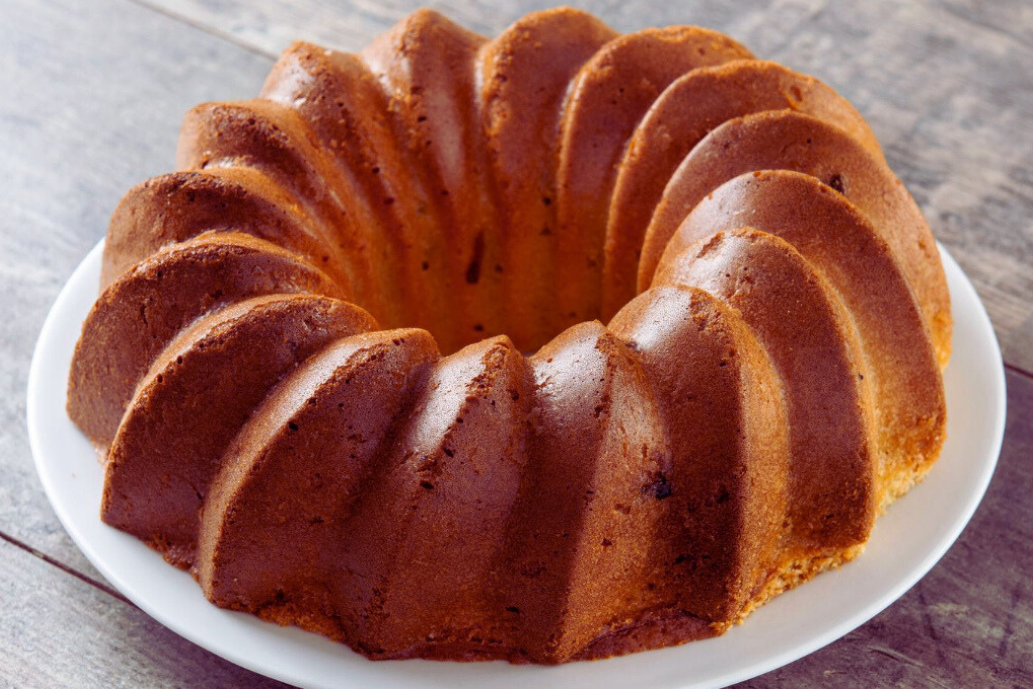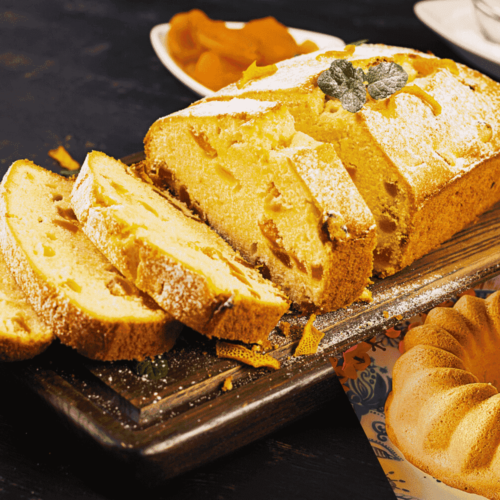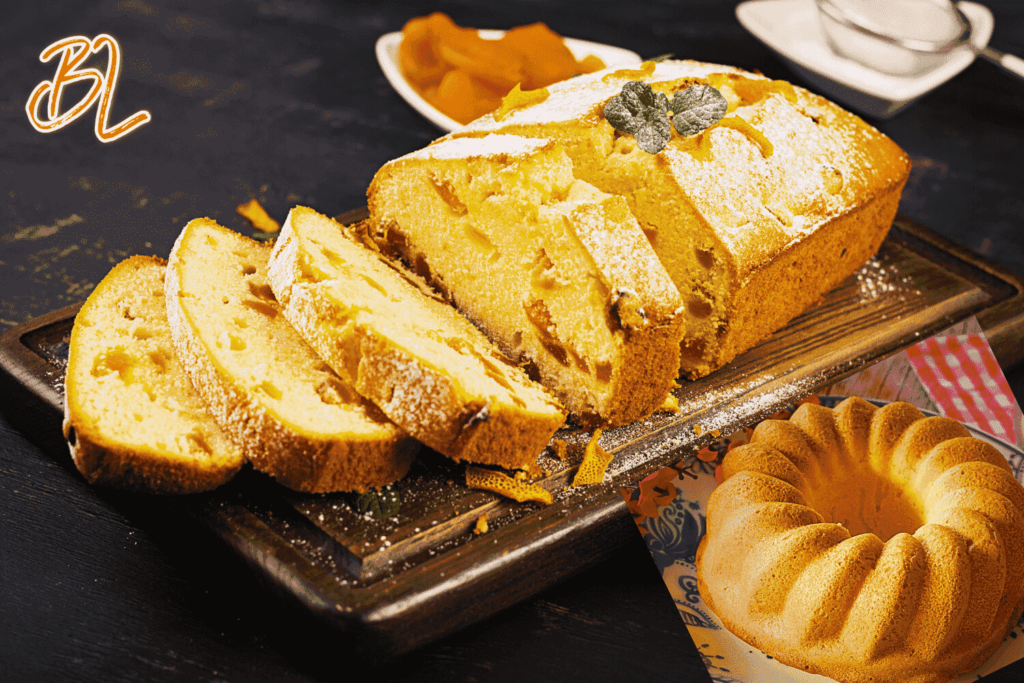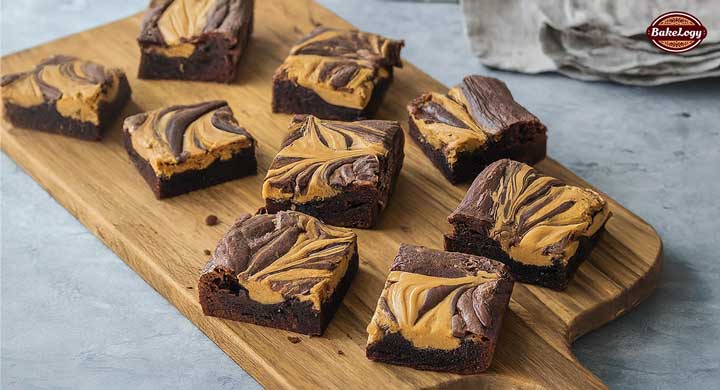Dive into Classic Pound Cake: A Beginner’s Guide to Baking Bliss
Ah, the pound cake. If you are looking for the best “Classic Pound Cake” then you are at the right place. A timeless symbol of homey goodness, its dense yet tender crumb, and buttery fragrance evokes memories of tea parties, celebrations, and cozy evenings by the fire. But for new bakers, this seemingly simple dessert can hold hidden mysteries. Fear not! This guide will demystify the pound cake, transforming you from a baking novice to a pound cake pro in no time.
What’s in a Name? Cracking the Pound Cake Code:
The name “pound cake” is no mere coincidence. Traditionally, the recipe called for equal amounts of four key ingredients: one pound each of butter, sugar, eggs, and flour. This straightforward formula resulted in a richly, satisfying cake perfect for sharing with loved ones. Today, variations abound, but the essence of the pound cake remains – a celebration of simple ingredients transformed into pure comfort food magic.
Gear Up for the Baking Success:
Before we dive into the batter, let’s assemble your baking tools. A trusty stand mixer or hand mixer with a large bowl will be your partner in creaming, while a whisk and spatula will handle the delicate mixing and smoothing. Most importantly, you’ll need a trusty loaf pan or, for a touch of elegance, a beautiful Bundt pan.
Ingredients: The Building Blocks of the Pound Cake Perfection:
Now, onto the stars of the show – the ingredients!
- Butter: The heart of the pound cake, choose unsalted butter for optimal control over flavor. Soften it to room temperature for creaming perfection.
- Sugar: Granulated sugar provides sweetness and structure. Don’t skimp on the quality; pure cane sugar will yield the best results.
- Eggs: Large eggs bind the cake together and add richness. Bring them to room temperature for even incorporation.
- Vanilla extract: This aromatic essence adds a touch of warmth and complexity. Pure vanilla extract is the gold standard.
- Flour: All-purpose flour forms the backbone of the cake. For an extra-fine crumb, consider cake flour.
- Salt: It might seem small, but salt enhances the sweetness and balances the flavors. Don’t forget it!
From Batter to Bliss: The Art of Pound Cake Creation:
With your ingredients prepped and tools at the ready, the baking adventure begins! Here’s a sneak peek into the process:
- Creaming is key: Whip that butter and sugar until light and fluffy – this builds air into the batter, resulting in a tender crumb.
- Eggs, the gentle giants: Incorporate them one at a time, ensuring each is fully mixed before adding the next. Patience is key!
- Vanilla’s warm embrace: Fold in the vanilla extract with a gentle touch, letting its aroma mingle with the batter.
- Dry meanders meet wet whispers: In a separate bowl, whisk the flour and salt. Then, gradually add it to the wet ingredients, alternating with milk if using. Mix until just combined – remember, overmixing leads to a tough cake.
- Battering beautifully: Pour the velvety batter into your prepared pan, smoothing the top for an even bake.
- The oven’s warm embrace: Let the cake bake in a preheated oven, its aroma filling the kitchen with anticipation. Remember, patience is a baker’s virtue!
- Golden perfection emerges: When a toothpick inserted into the center comes out clean, your cake is golden and ready to greet the world.
- Cool and conquer: Let the cake cool partially in the pan before transferring it to a wire rack. This prevents crumbling and allows it to settle gracefully.
Slicing into Sweet Satisfaction:
With your masterpiece cooled and ready, it’s time to savor the fruits (or should we say cake?) of your labor. Each slice reveals a moist, tender crumb and a symphony of buttery, sugary flavors. Enjoy it plain, dusted with powdered sugar, or glazed with a citrusy drizzle – the possibilities are endless!

Beyond the Basics: Pound Cake Twists and Turns:
This classic recipe is just the beginning! Feel free to explore your inner baker and personalize your pound cake. Here are some ideas to get you started:
- Citrusy twist: Add grated lemon or orange zest for a touch of sunshine.
- Nutty delights: Fold in chopped pecans, walnuts, or almonds for added texture and flavor.
- Spiced temptations: Warm up your cake with spices like cinnamon, nutmeg, or cardamom.
- Chocolate dreams: Swirl in melted chocolate for a decadent twist.
With a little practice and a sprinkle of creativity,

Pound Cake FAQs: Answers to Your Baking Conundrums!
Excited to bake up a batch of classic pound cake but have a few lingering questions? Worry not, dear baker, for this FAQ section is here to guide you through your baking journey all the time!
Q: What happens if I don’t have a stand mixer or hand mixer?
A: Fear not! While using a mixer simplifies creaming, you can achieve the perfect fluffy batter with some elbow grease! Simply grab a whisk and a good dose of patience. Cream the butter and sugar by hand until light and fluffy, about 5-7 minutes. Remember, a little muscle work never hurt anyone (or any cake)!
Q: Can I substitute all-purpose flour with cake flour?
A: Absolutely! Cake flour has a lower protein content, resulting in a finer crumb and extra-tender cake. While not essential, it’s a great way to elevate your pound cake game. If using cake flour, reduce the baking time by about 5-10 minutes and keep an eye on the golden edges.
Q: My cake turned out a bit dense. What went wrong?
A: Overmixing can be the culprit! Remember, a gentle touch is key when combining the dry and wet ingredients. Stop mixing once just combined to avoid a tough texture. Additionally, ensure all your ingredients are at room temperature and bake for the recommended time.
Q: How can I save a dry pound cake?
A: While a slightly dry cake doesn’t spell disaster, a little rescue mission can enhance its appeal. Drizzle it with a simple syrup (made by boiling equal parts sugar and water), brush with melted jam, or even top it with whipped cream and fresh berries for a moisture boost.
Q: Can I freeze leftover pound cake?
A: Absolutely! Wrap the cooled cake tightly in plastic wrap and then aluminum foil, or slice and freeze individual portions. Thaw overnight in the refrigerator and enjoy! Frozen pound cake will keep for up to 3 months.
Q: This recipe inspires me! What other creative twists can I try?
A: Let your creativity soar! Add a citrusy burst with grated zest, fold in chopped nuts for a delightful crunch, or swirl in melted chocolate for a decadent twist. Feel free to experiment with spices like cinnamon or nutmeg, or even consider adding dried fruit or herbs for a unique flavor profile.
Remember, baking is an adventure! Embrace the process, trust your instincts, and most importantly, have fun! Happy baking and happy pound cake eating!

Classic Pound Cake
Equipment
- Stand mixer or hand mixer with large bowl
- Loaf pan (9×5 inches) or Bundt pan
- Whisk
- Spatula
- Toothpick
Ingredients
- 1 cup 2 sticks unsalted butter, softened
- 2 cups granulated sugar
- 4 large eggs
- 1 teaspoon vanilla extract
- 3 cups all-purpose flour
- 1/2 teaspoon salt
Instructions
- Preheat oven to 325°F (165°C). Grease and flour your loaf pan or Bundt pan. (For an extra-special touch, you can sprinkle the bottom of the pan with some sugar before adding the batter.)
- Cream together the butter and sugar in a large bowl until light and fluffy. This will take about 3-5 minutes with a stand mixer or 5-7 minutes with a hand mixer.
- Beat in the eggs one at a time, scraping down the sides of the bowl after each addition.
- Stir in the vanilla extract.
- In a separate bowl, whisk together the flour and salt.
- Add the dry ingredients to the wet ingredients in three batches, alternating with milk (if using). Mix just until combined, being careful not to overmix.
- Pour the batter into the prepared pan and smooth the top with a spatula.
- Bake for 1 hour to 1 hour and 10 minutes, or until a toothpick inserted into the center comes out clean.
- Let the cake cool in the pan for 10 minutes, then transfer it to a wire rack to cool completely before slicing and serving.
- Tips:
- For an even denser cake, use cake flour instead of all-purpose flour.
- To add a citrusy twist, add 1 tablespoon of grated lemon or orange zest to the batter.
- You can also glaze the cake once it has cooled. Simply whisk together 1 cup of powdered sugar with 2-3 tablespoons of milk or lemon juice until smooth, then drizzle over the top of the cake.
- Enjoy your delicious homemade pound cake!




